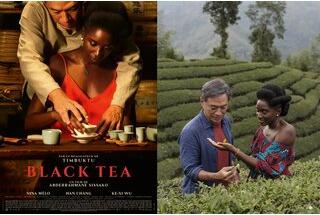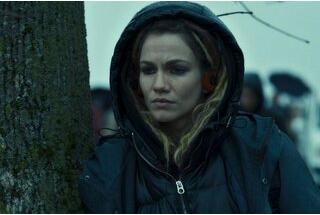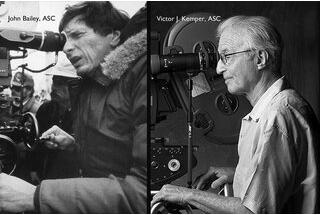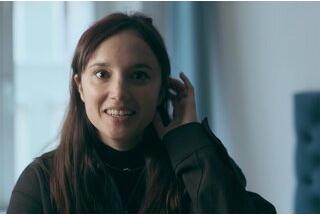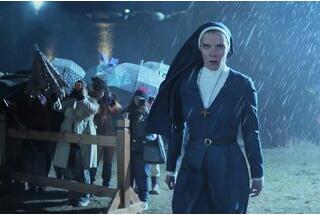James Laxton, ASC, talks about shooting Barry Jenkins’ series "Underground Railroad"
Between magic and realityJames, one might say that the slave era is one of the most frequently portrayed in American cinema. Was this a concern of yours?
James Laxton: It’s true that there have been many films on this period of American history. Some have even become cinema classics. But, I think that in our adaptation of Colson Whitehead’s novel, because we placed the work at the center of our concerns, we have opted for a realism that is full of symbols. Not that the story isn’t authentic, but it does take some liberties, of course, in the use of those symbols. That’s exactly what we were going for in terms of the look of the series. A sort of enhanced reality, that sometimes flirts with the bizarre but never challenges the presumption of authenticity. We wanted to find that sweet spot between magic and reality. That’s why we didn’t at all try to rewatch particular films that dealt with that period. I would even say that we tried to distance ourselves from the memories we might have of such films. Moreover, when Barry Jenkins and I work together, we often like to start with a blank sheet of paper and visually find our way as we wend our way through the long preproduction process. The only somewhat precise references we mentioned together were photographic in nature, such as Australian photographer Bill Henson’s work, in particular through the portrait shots that punctuate the entire series. We didn’t necessarily attempt to reproduce his pictural style, but rather to create a slightly strange, almost haunted, atmosphere… "Underground Railroad" is a horror story in many respects, with very gruesome scenes. Bill Henson’s work seemed to strike the right tone for the direction we were going in.
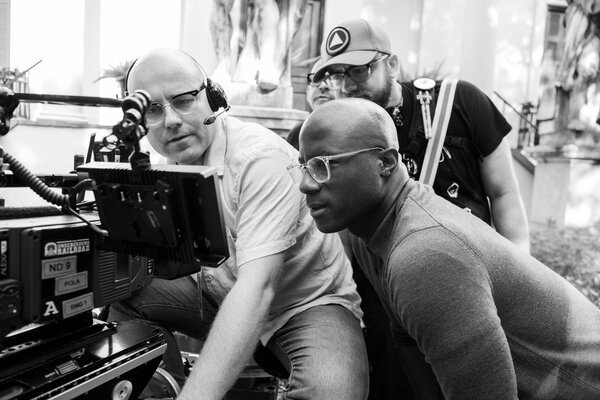
In any case, this is not a parade of antebellum estates…
JL: As is evident from the first episode, we decided to place the narration on the protagonists’ side, and to place the camera where they lived. Meaning in the fields or near their huts. Telling the story from Cora’s point of view. And showing where she works and sleeps… For the slave quarter, for example, Mark Friedberg, our set designer, was able to entirely rebuild the set outdoors by having the crops planted around them and building the huts. He included a lot of historical details drawn from research, such as the engravings in the woods that evoke these men and women’s journey from Africa. This is my second project with him (after If Beale Street Could Talk) and his long experience (with Tod Haynes and Wes Anderson, to name a few) is so beneficial to us. I always learn a lot from him.
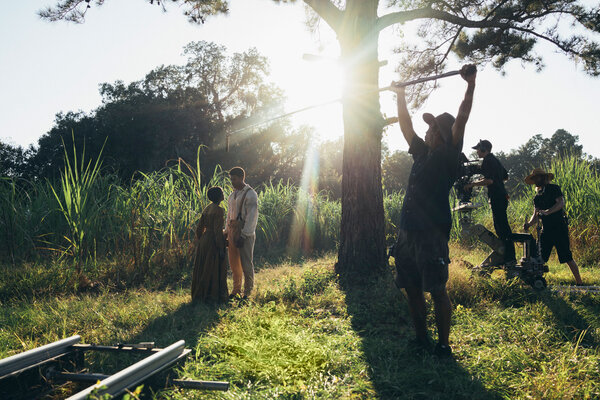
Let’s first of all discuss the opening scene. This is a scene with very strongly affirmed visual choices.
JL: We shot the series over 116 days, and given that the screenplay follows Cora, we had to follow it in chronological order, if only for questions of shooting locations. In the opening sequence, everything was very deliberate. With nearly eight months of preproduction, this was one of the first times in my career where I was able to work on the concrete production of images with the set designer in such a precise way. As I was saying, we meticulously recreated the set outdoors with Mark, by planting sugar cane behind the tree, within the angle of the sunset. Under such conditions, I was able to shoot this sequence without additional lighting, except for a few reflectors here and there. What you see is pretty much what you get. In terms of the rendering, since this is the opening scene between our two characters, and when I read the script, I was immediately struck by the seriousness of the situation. I felt it was important to give the impression that they were a bit hidden, although they were out in the open. I also wanted to use the very strong backlighting, the highly visible flare, and the sweat on their faces to convey the importance of what Cesar is asking Cora, the romantic subtext, and the danger they are about to face. An intense image for a question that is equally intense.
How did you obtain this result from the lenses?
JL: During my discussions with Dan Sasaki (Panavision’s Vice President of Optical Engineering) on my wishes in terms of image, I immediately mentioned the sensation of a burst of light. Not just a spectacular flare, no, a true enveloping of the image by the light, as though the sun were literally taking control of the lens. Dan’s team personalized the lenses we used for those takes specifically on the basis of my requests, namely Panaspeed lenses mounted on Alexa LF and Mini LF cameras. These are full-frame lenses and they open at 1.4. The 65 and 80mm lenses were our favored lenses, with the 40mm a close third. For the rest of the series, I also used Primo 70s and an anamorphic T series that had been modified for the three episodes shot in Scope format (the seven other lenses were in 1.78 spherical).

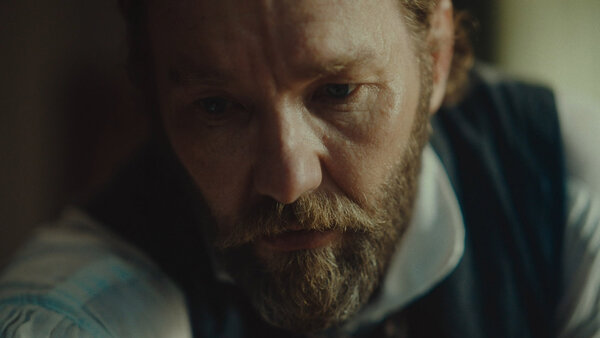
Now, let’s talk a bit about those closeup shots. They are also very important in this series. As an example, I chose the brief dialogue between Cora (Thuso Mbedu) and Ridgeway (Joel Edgerton), again from the first episode.
JL: These closeups were shot between 1.4 and 2. You know, there’s something about portraits that Barry and I hold dear. I was just mentioning how we were more influenced by photography than cinema, and here, again, we were guided by the idea of 6x6 portraits or view camera portraits. By working in full frame, at full aperture, we got close to that feel. For Barry, I believe there’s a level of intimacy in the way he films and tells stories that goes hand-in-hand with that subjectivity and that way of literally getting under the characters’ skin. For me, the closeups are naturally one of the keys to the film. If you take this scene, these two characters are going to become the recurring protagonists of the rest of the series, even the viewer doesn’t know it yet at that point. And connecting them this way in these closeups where focus is so fragile, just on their eyes, conveys that message—or at least I hope it does.
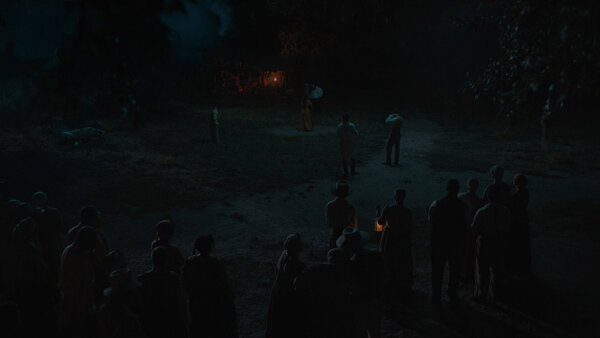
The first night sequence, which ends with a whipping, is a night mood that I’d like you to talk about…
JL: If my memory serves me well, this was one of the most extensive light installations I did on the entire series. We really wanted a moonlight feel, one that was very dark and soft, but authentic. We actually lit a 500-meter area. For me, the challenge of the scene was to transcribe the trauma that the men and women of that community had to endure as witnesses to horror. I wanted to take distance from the torture to focus the camera on their faces. There are, indeed, many violent scenes in this series, but, for us, the most important thing was to focus more on the witnesses than on the victims directly.
Another scene that is rather emblematic of the way you treated nights is the one where Cesar returns to his hut at night before fleeing… It’s truly in the shadows!
JL: The decision on how to film nights was central for us. This was our first shared experience shooting a series, and of course, one wonders how the audience will receive these images. For a cinema film, the point of reference remains a screening in a cinema. But, here, everything is extremely variable. It can go from a high-end home cinema setup to a mobile phone… Without even thinking about the location because it can be watched anywhere. Some filmmakers probably take this factor into account and adapt. But we decided not to take it into account and to remain faithful to the type of work we’d done before for the cinema. In retrospect (the series has been out for nine months already), I think we made the right choice. Yes, it’s true, some viewers will have a very hard time understanding what’s happening in that scene… But that’s their problem, not mine! In a general sense, if you look at the other series present at this year’s Camerimage, I think we’re not the only ones who chose to go down that path. I even think that the mindset on series is starting to change dramatically, and that the decisionmakers have more and more of an appetite for risk. They are opting for more personal works than the industrial machines that television mass produced for years…
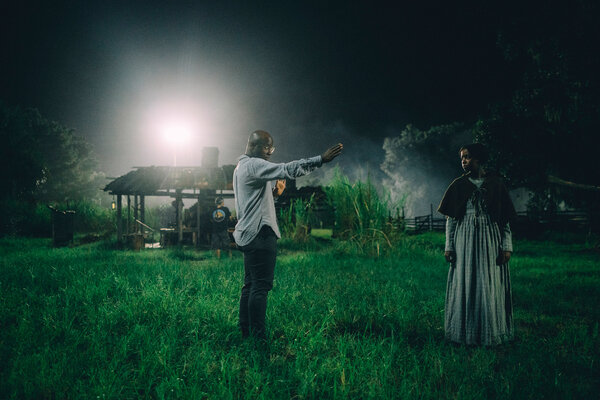
How do you visualize these moods on set in the middle of things?
JL: For the look, we’ve been working with the same colorist since Moonlight. His name is Alex Bickle and he made us one LUT per episode. Of course, during the final color grading, the look can always be changed a bit, but Alex’s contribution in the months prior to shooting is extremely important to me. We really perfect the entire backbone of the image, we decide where to put the blacks, how the highlights are going to appear, and what I can expect in the color timing room months later.
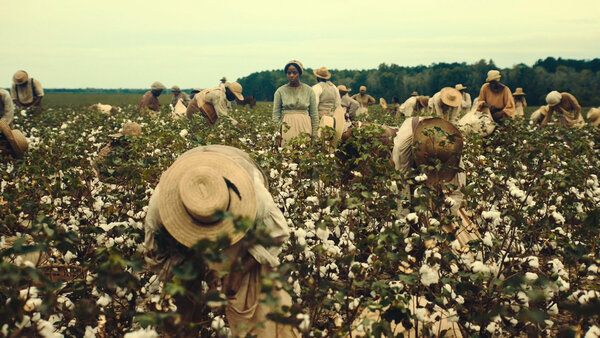
The day sequence in the cottonfield is nothing like a golden sunset…
JL: I’m not sure that was the look we were exactly going for initially. I remember, in any case, that that scene was shot around 2 p.m. It was a gray day and I think the result was a success. Indeed, those people had to work seven days a week, and of course, sometimes the sky was cloudy… Perhaps, indeed, had we had the choice, we would have opted for a sequence where there would have been a bit more warmth on screen. But that’s where reality takes over. And the sensation of a dull image takes over. That’s the term we had to rediscover in the color grading room. And it sticks with the context. In fact, I think we really wanted to show the industrial and large-scale aspect of the slaves’ work. That’s why we chose that immense place with cotton fields as far as the eye can see. I feel the bird’s-eye-view wide shot and then the camera movement give that feeling of infinity.
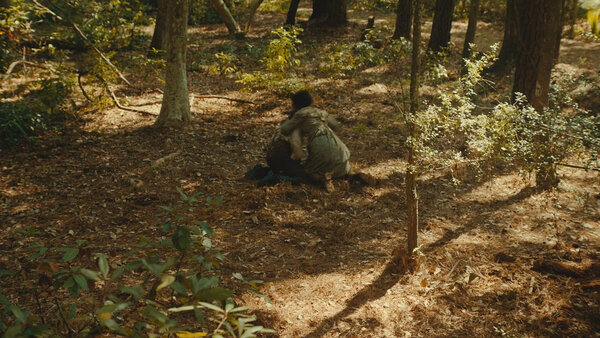
When Cesar and Cora flee, you indulged in a long take from a cherry-picker that rises in the middle of a chase. That’s an unusual choice for an action scene, isn’t it?
JL: That sequence was shot at the end of the day, almost at dusk, and if I remember correctly, there was only one take from the cherry picker. That allows me to mention another aspect of this series, namely its meditative side. Barry wanted the language of each episode to rely more on the length of the takes rather than on editing. Not that he had long takes in mind for every scene, but rather a desire to privilege authenticity and realism through the scenography and acting. As I mentioned previously, keeping the cursor on the side of realism as much as possible, to leave ourselves room for the enhancements to reality we made elsewhere.
Look, in the following shot, where Cesar and Cora run off into the dusk, the camera is still in birds-eye view…
JL: How funny that you should say that. You’re right. There is indeed something in this series that is like a sort of phantom presence of spirits. The spirits of the characters’ forbears. A slightly mystical side that is reinforced by these somewhat bird-eye view shots. Nothing extreme, really, but sometimes just placing the camera slightly above the characters’ line of sight…
I think that could portray the point of view from above, from elsewhere. And we absolutely didn’t want to glorify violence. And I think that shooting from above does precisely that. In a word, watching what is happening with a peaceful presence, as though it were an objective perspective.
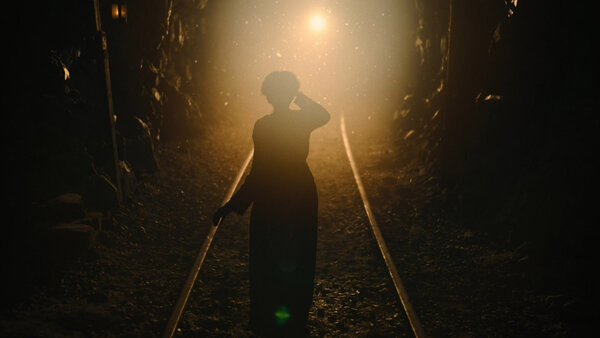
Lastly, let’s discuss the denouement of the first episode, where they discover the famous underground railroad…
JL: This was a pretty incredible scene to make. We got our hands on a railway museum that had preserved a small network of working railways on site. Mark Friedberg and his crew literally reconstructed a 75 meter long by 6 meter high tunnel around these rails. You can imagine the difficulties we would have faced if we’d decided to run a train in a studio… Without even mentioning the security constraints. In terms of lighting, it was pretty crazy because we literally carpeted the ceiling of the tunnel with LEDs so as to create a sort of indeterminate half-shadow, that was torn asunder by the train’s light. Of course, it was a tunnel, so no source outside of the train itself could have been justified. It was a huge amount of work for my crew to handle this set, even though the result seems to be at the limit of darkness!
And the particles that fall from the sky like a plume of Tinker Bell’s powder?
JL: That’s a combination of actual footage and FX. The anchor in reality was that the slightly DIY secret tunnel began to vibrate when the train arrived. Particles from the vaulted ceiling would begin to come loose and fall to the ground. In the shot, it’s hard to tell what it is… Once again, this is the little touch of magic that we tried to distill, within a context of the most realistic possible image, lighting and sets. I feel that combines several sensations: a bit of the eerie, a bit of the fantastic, and a bit of surprise. Exactly the way this set is reused later on in the series, with scenes that oscillate between those tones…
You and Barry Jenkins have come a long way since you began your careers. Aren’t you afraid of losing a certain authenticity now that you’ve risen to the top of the stairs?
JL: Personally, I don’t feel a change. We’re both so used to making on-the-spot decisions and charging on without asking ourselves too many questions. Even though now we’re working with big budget productions, and our decisions have greater financial repercussions, I still feel the same way working with him as I did on our first short film together, which was a really broke production!
(Interview by François Reumont on behalf of the AFC, and translated from the French)
 En
En
 Fr
Fr
